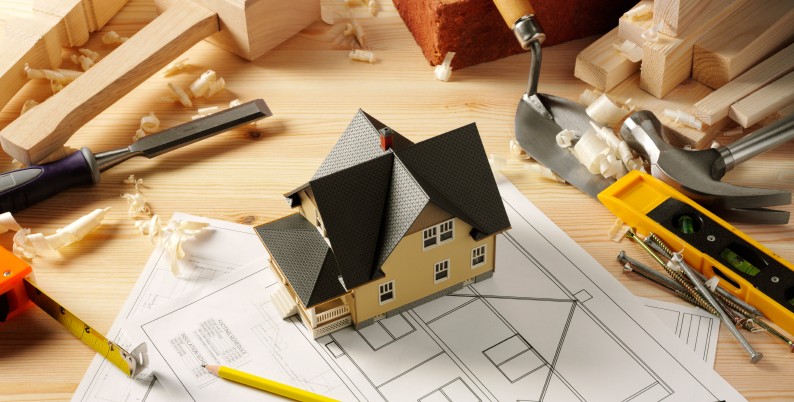A Beginner’s Guide to Home Improvement Projects
Contents
- 1 Introduction
- 2 1. Understanding the Basics
- 3 2. Planning and Budgeting
- 4 3. DIY vs. Hiring Professionals
- 5 4. Safety Measures
- 6 5. Building Permits and Regulations
- 7 6. Step-by-Step Project Execution
- 8 7. Evaluating Project Results
- 9 Strengths and Weaknesses of A Beginner’s Guide to Home Improvement Projects
- 10 A Beginner’s Guide to Home Improvement Projects – Complete Information
- 11 Frequently Asked Questions (FAQs)
- 11.1 1. Can beginners undertake complex home improvement projects?
- 11.2 2. Is it necessary to hire professionals for every home improvement task?
- 11.3 3. How do I choose the right tools for my project?
- 11.4 4. What should I prioritize when budgeting for a home improvement project?
- 11.5 5. Are there eco-friendly options for home improvement projects?
- 11.6 6. How can I maintain safety throughout my project?
- 11.7 7. What should I do if I encounter challenges during the project?
- 11.8 8. Can I make changes to my project after it has started?
- 11.9 9. How do I ensure my project complies with local regulations?
- 11.10 10. What are some common mistakes to avoid in home improvement projects?
- 11.11 11. Can I save money by reusing materials in my project?
- 11.12 12. How can I make my home improvement project more sustainable?
- 11.13 13. How do I ensure a successful outcome for my project?
- 12 Conclusion
- 13 Author
Introduction
Hello Readers,
Welcome to our beginner’s guide to home improvement projects! Whether you are a new homeowner looking to spruce up your space or someone with a growing DIY spirit, this article is here to help you navigate the world of home improvement with ease and confidence.
Undertaking a home improvement project can be an exciting yet daunting task. From small scale renovations to major overhauls, there are countless possibilities to transform your living spaces into something extraordinary. However, it is crucial to approach these projects with the right knowledge and a well-thought-out plan to ensure successful outcomes.
In this guide, we will walk you through the basic steps of home improvement projects, provide valuable tips and tricks, and highlight potential pitfalls to watch out for. So, grab a cup of coffee, sit back, and let’s dive into the world of home improvement together!
1. Understanding the Basics
Before embarking on any home improvement project, it’s essential to familiarize yourself with the basics. This involves learning about different tools, materials, and techniques relevant to the specific project you have in mind. Whether it’s painting a room, installing new flooring, or revamping your kitchen, understanding the fundamentals will set you up for success.
2. Planning and Budgeting
A well-planned project is more likely to yield desirable results. Start by outlining your goals, prioritizing tasks, and creating a realistic timeline. Moreover, setting a budget is crucial to ensure that your project remains financially manageable. Consider all factors, including material costs, professional assistance, and any unforeseen expenses that may arise along the way.
3. DIY vs. Hiring Professionals
One important decision you’ll face during your home improvement journey is whether to tackle the project yourself or hire professionals. While some tasks can be handled by enthusiastic beginners, others require expertise and experience. Weigh the pros and cons, considering your skill level, available time, and the complexity of the project, before making a decision.
4. Safety Measures
Prioritizing safety should be paramount in every home improvement project. Familiarize yourself with necessary safety protocols, such as wearing protective gear, working in well-ventilated areas, and taking precautions when working with power tools or potentially hazardous substances. Safety awareness will safeguard you and your loved ones throughout the project.
5. Building Permits and Regulations
Depending on the scope of your project, you may need to obtain building permits and adhere to specific regulations. Do thorough research to ensure compliance with local laws, codes, and regulations. Failure to comply can lead to costly fines, delays, and even having to undo completed work.
6. Step-by-Step Project Execution
Once you have planned, budgeted, and acquired all necessary permissions, it’s time to execute your home improvement project. Break down the tasks into smaller, manageable steps, and tackle them one at a time. This approach will not only help you stay organized but also prevent feeling overwhelmed by the project’s magnitude.
7. Evaluating Project Results
After completing your home improvement project, take the time to evaluate the results objectively. Assess whether the desired outcome has been achieved and identify any areas for improvement. Being critical of your work will help you continue growing your skills and knowledge for future projects.
Strengths and Weaknesses of A Beginner’s Guide to Home Improvement Projects
Like any resource, A Beginner’s Guide to Home Improvement Projects has its strengths and possible weaknesses. Let’s explore them:
Strengths
1. Comprehensive Coverage: This guide provides a thorough overview of the key aspects of home improvement projects, leaving no stone unturned.
2. User-Friendly Format: The guide is structured in a way that is easy to follow, ensuring that beginners can navigate through the information effortlessly.
3. Practical Tips and Tricks: It offers practical advice, tips, and tricks that readers can apply directly to their own projects, enhancing their chances of success.
4. Visual Aid: The inclusion of diagrams, images, and tables aids comprehension and allows readers to visualize the concepts effectively.
5. Safety Emphasis: The guide prioritizes safety measures, ensuring readers are aware and well-prepared to undertake their projects without putting themselves or others at risk.
6. Budgeting Insights: It addresses the crucial aspect of budgeting, helping readers establish realistic financial plans and avoid potential financial setbacks.
7. Expert Opinions: The guide incorporates insights from professionals in the field, lending credibility and offering a wealth of knowledge to readers.
Weaknesses
1. Lack of Specificity: Due to the broad nature of home improvement projects, some readers may find that certain topics aren’t covered in great depth. Further research may be necessary for more specialized projects.
2. Limited Troubleshooting: While the guide provides general problem-solving advice, it may not cover every possible issue that can arise during a home improvement project.
3. Localized Information: Building permits and regulations can vary by location, making it important for readers to supplement the guide’s information with local guidelines.
4. Limited Interactivity: As a written resource, the guide may not provide the same level of interaction and hands-on learning as workshops or classes.
5. Evolving Industry Trends: Home improvement trends and techniques are constantly evolving. Some information in the guide may become outdated over time, requiring readers to stay up-to-date through additional resources.
6. Individual Variations: Every home improvement project is unique, and certain aspects may vary based on the specific circumstances of your home or location.
7. Time Constraints: Completing home improvement projects often takes longer than initially anticipated. Readers should be prepared for unexpected delays and adjust their timelines accordingly.
A Beginner’s Guide to Home Improvement Projects – Complete Information
| Chapter | Title |
|---|---|
| 1 | Understanding the Basics |
| 2 | Planning and Budgeting |
| 3 | DIY vs. Hiring Professionals |
| 4 | Safety Measures |
| 5 | Building Permits and Regulations |
| 6 | Step-by-Step Project Execution |
| 7 | Evaluating Project Results |
Frequently Asked Questions (FAQs)
1. Can beginners undertake complex home improvement projects?
Yes, beginners can take on complex projects with the right research, planning, and guidance.
2. Is it necessary to hire professionals for every home improvement task?
No, many tasks can be successfully completed by beginners with proper care and attention to detail.
3. How do I choose the right tools for my project?
Consider the specific requirements and research reputable brands and product reviews to make informed decisions.
4. What should I prioritize when budgeting for a home improvement project?
Allocate funds for essential materials, labor costs (if applicable), and a contingency budget to account for unforeseen expenses.
5. Are there eco-friendly options for home improvement projects?
Absolutely! There are numerous eco-friendly materials and practices available to help reduce your environmental impact.
6. How can I maintain safety throughout my project?
Adhere to safety guidelines, use appropriate personal protective equipment (PPE), and seek professional assistance when dealing with potentially dangerous tasks.
7. What should I do if I encounter challenges during the project?
Don’t panic! Troubleshoot the issue by researching potential solutions, seeking advice from experts, or consulting relevant online forums.
8. Can I make changes to my project after it has started?
Some alterations may be possible, but they may affect your timeline and budget. Evaluate the impact before making any changes.
9. How do I ensure my project complies with local regulations?
Research local building codes and permit requirements and consult the appropriate authorities to ensure compliance.
10. What are some common mistakes to avoid in home improvement projects?
Avoid rushing the project, neglecting safety measures, underestimating time and budget, and overlooking proper planning.
11. Can I save money by reusing materials in my project?
In some cases, reusing materials can be a cost-effective option. However, ensure that they are still in good condition and meet the project’s requirements.
12. How can I make my home improvement project more sustainable?
Consider using energy-efficient materials, opting for water-saving fixtures, and incorporating renewable energy sources wherever possible.
13. How do I ensure a successful outcome for my project?
Plan meticulously, research extensively, remain adaptable, seek advice when needed, and enjoy the learning experience along the way.
Conclusion
Congratulations, Readers! You have reached the end of our beginner’s guide to home improvement projects. Armed with valuable knowledge and insights, you are now equipped to embark on your own home improvement endeavors with confidence and poise.
Remember, home improvement projects are not only about transforming your living spaces; they also provide an opportunity for personal growth, creativity, and self-expression. Take this chance to explore new ideas, sharpen your skills, and create a space that truly reflects your unique style and preferences.
So, what are you waiting for? It’s time to roll up your sleeves, gather your tools, and bring your dream projects to life. You have the power to turn any house into a truly extraordinary home!
Disclaimer: The information provided in this article is for general informational purposes only and should not be considered as professional advice. Always consult with experts and ensure compliance with relevant regulations before undertaking any home improvement project.










